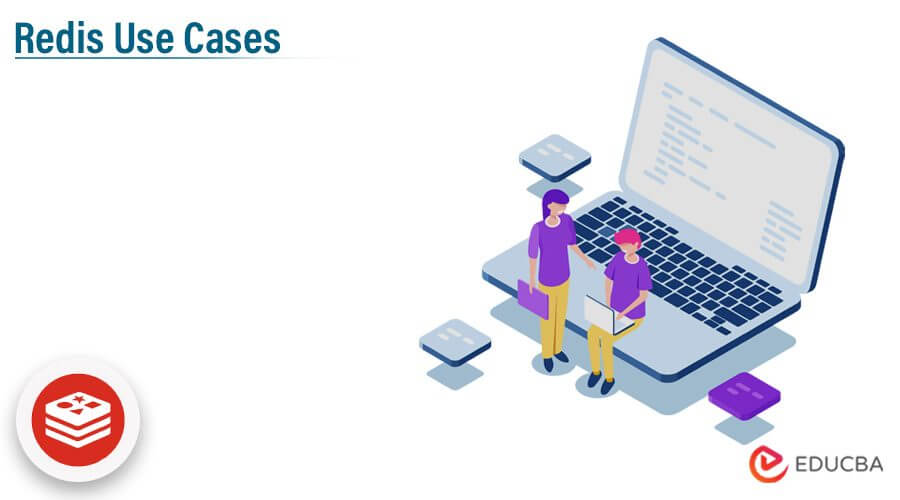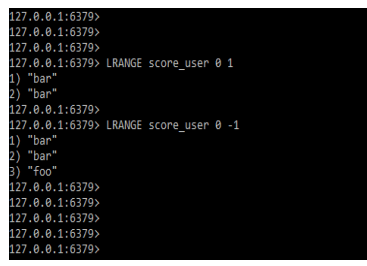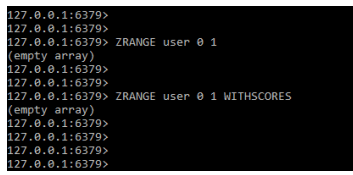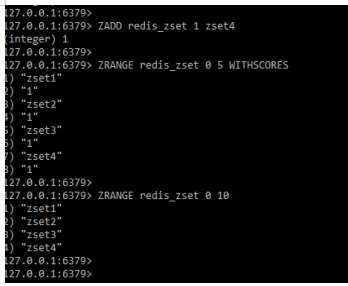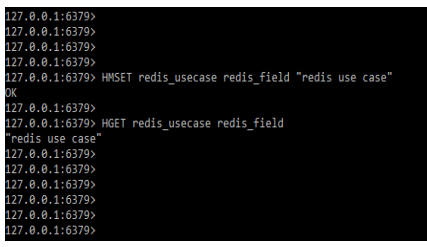Updated June 28, 2023
Introduction to Redis Use Cases
Redis use cases contain how Redis will work redis contains multiple use cases. All Redis data will reside in the memory, which enables high throughput and low latency for accessing the data. As per other databases, this is not storing data on disk. The caching use case of Redis is very useful for implementing the in-memory cache to decrease the latency of the Redis server.
Redis is designed to use persistent disk storage, ensuring survival through network bottlenecks and process outages. Redis persists datasets by taking snapshots and appending them with the available changes. Redis configures the same backup based on demand or intervals to ensure the database’s integrity and durability.
When we use Redis use cases, we must define key-based access. As we all know, Redis is based on the key value model, meaning data is stored and retrieved using keys. Key-based access will naturally allow for access time for caching the model maps. Redis is set with the TTL when it expires by using keys.
Key Takeaways
- Redis enterprise serves as the background persistent store for the jobs running on disk. The microservices that were used in Redis are now used in dedicated authentication.
- In Redis, we are using memory caching for temporarily stored accessed data. It is used to improve performance.
Top Redis Use Cases
Below are the top use cases of Redis as follows. There are multiple use cases defined in Redis as follows:
- Session cache – This is an important use case for Redis. Redis is important when implementing an in-memory cache to reduce data latency. Redis serves requested items in milliseconds, allowing us to quickly scale high loads without expanding the backend. A database query will cache used objects such as images and metadata files.
- Queues, chat, and messaging – Redis will support the sub and pub by using pattern matching and data structures variety which are defined in sorted sets and lists. This allows Redis to keep social media feeds, chat rooms, and comments of real streams. Redis data structure will create and implement the lightweight queue. The list will offer the atomic operations.
- Gaming leaderboards – Redis is a very popular choice for developing game leaderboards. We need to use only data structures which provide unique elements while maintaining a list of sorted user scores. We can also use the sorted sets to handle the time series data in timestamps.
- Session store – Redis stores data in the memory using high availability; it is a perfect choice for developers to manage and store the session data. Redis is responsible for user-specific personalization.
- Rich media streaming – Redis provides fast data storage in memory. Redis also stores user metadata about user profiles and will view user information to enable streaming video on multiple desktops or mobiles simultaneously.
- Geospatial – Redis manages geospatial data to scale the speed. We use commands like GEODIST and GEOADD to store and process geospatial data in real time. Using Redis, we can also use the location-based feature.
- Machine learning – In data-driven applications, machine learning is required. For the application of fraud detection, a real-time binding that is processing data is live and will make decisions.
- Real-time analytics – Redis is used in streaming solutions like Amazon Kinesis and Apache Kafka. It is a memory structure that stores data for ingesting processes with a specified latency.
Redis Use Cases for Developers
There are multiple use cases available for developers in Redis. Below is the use case of Redis for developers as follows:
- Fast fraud detection for decisions in real-time – The cost of fraud is increasing. Opportunities will follow the growth in the digital space by utilizing retailers, fraudsters, and gaming. Several companies are using ground-based biometrics to track down fraudsters. This is not a unique challenge; according to data, online transactions increased faster after Covid-19.
- Modern experiences in gaming – The successful gaming application requires user experience, which posted challenges in infrastructure specifically for real-time games of multi-player. The user launches the game, connects to the gaming server, and collaborates with the players. Experience in gaming includes real-time transactions which involve money. In gaming applications, developers will rely on low latency and deliver the best performance and unlimited scales. As we all know, the Indian team releases their game rosters before the start of the match. This contains massive data but does not include the impact on customer experience, particularly in time.
- Ecommerce framework of omni channel – Creating an online business digital presence will curve the massive experience. The modern multi-channel retailer is used real-time inventory for optimizing the inventory. The developers developing applications found it difficult to maintain and build these systems.
- Real-time analytics with new revenue streams – Businesses require software that instantly collects and stores large volumes of data in daily life. Many technologies support complex and large ingest for streaming real-time data from the application and the internet. These applications analyze data quickly to make quick business decisions. The best example of Redis is a data ingestion, demonstrating high performance.
- Painless business scalability – Using a new work as an example, which is used to build cloud-based suites for the software industry. While pursuing extraordinary growth, organizations will stain their capability in application architecture.
Examples of Redis Use Cases
Given below are the examples:
Example #1
Below is an example of Redis use cases as follows. We are defining the counting of leaderboards as follows. We are using lrange command for the same as follows.
Code:
LRANGE score_user 0 1LRANGE score_user 0 -1Output:
Example #2
The below example shows Redis use cases as follows; we are using zrange as follows.
Code:
ZRANGE user 0 1ZRANGE user 0 1 WITHSCORESOutput:
Example #3
In the below example, we are defining the set with ZRANGE as follows. We are adding data using zadd and displaying using zrange as follows.
Code:
ZADD redis_zset 1 zset4ZRANGE redis_zset 0 5 WITHSCORESZRANGE redis_zset 0 10Output:
Example #4
In the below example, we are using hmset and hget to define the redis use case as follows. We are defining the hmset command as follows.
Code:
HMSET redis_usecase redis_field "redis use case"
HGET redis_usecase redis_fieldOutput:
Conclusion
Redis configures the same backup as per demand or intervals to ensure the integrity and durability of the database. Redis use cases contain how Redis will work and multiple use cases. All Redis data will reside in the memory, which enables high throughput and low latency for accessing the data.
Recommended Articles
We hope that this EDUCBA information on “Redis Use Cases” was beneficial to you. You can view EDUCBA’s recommended articles for more information.
